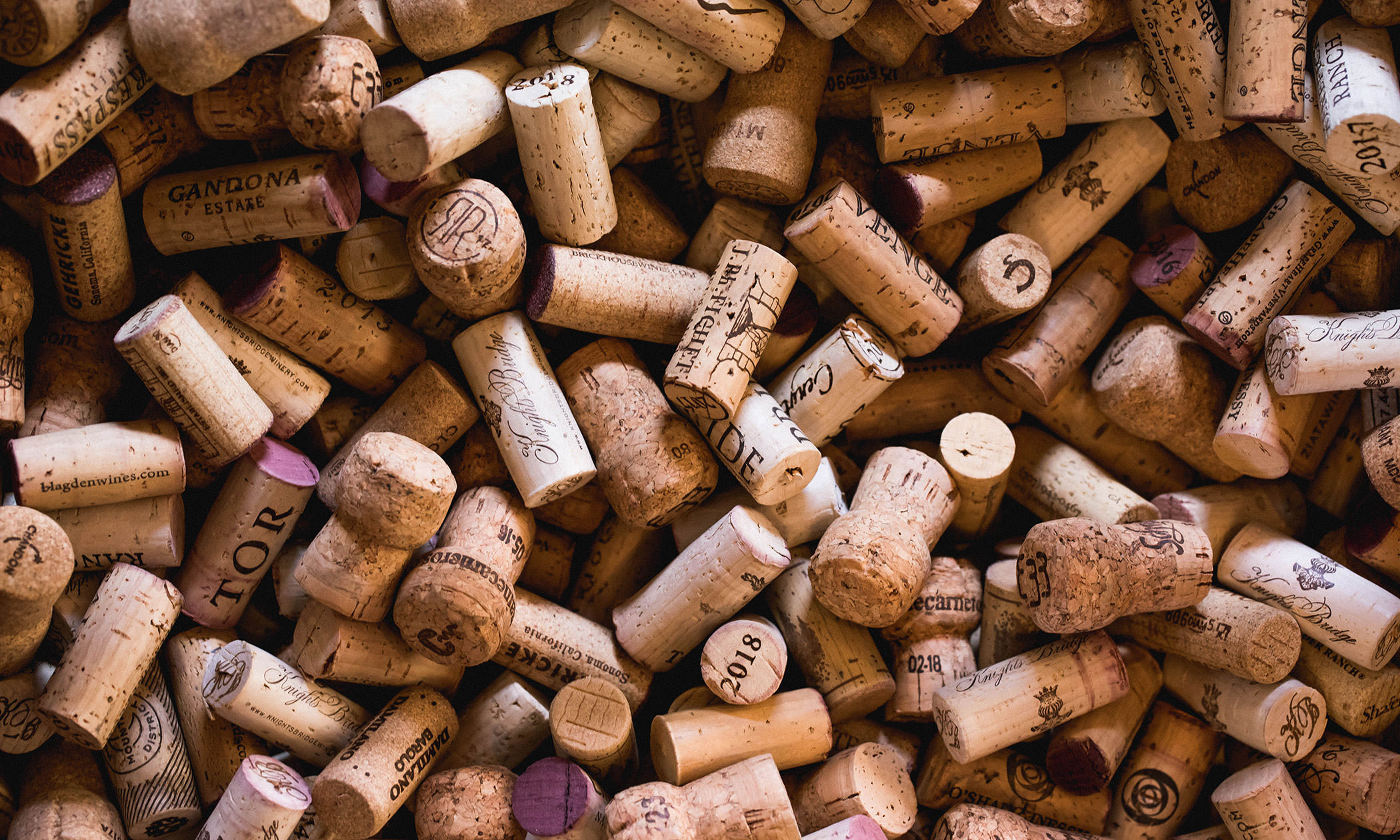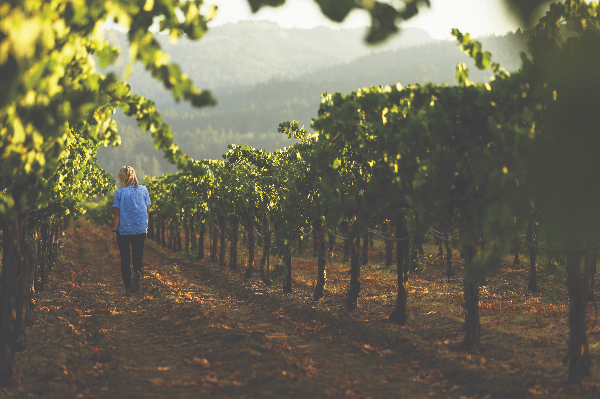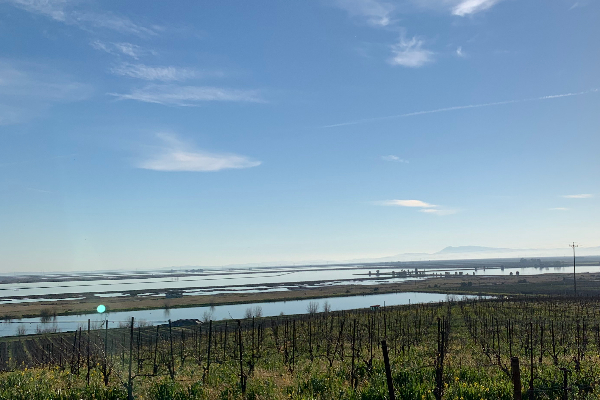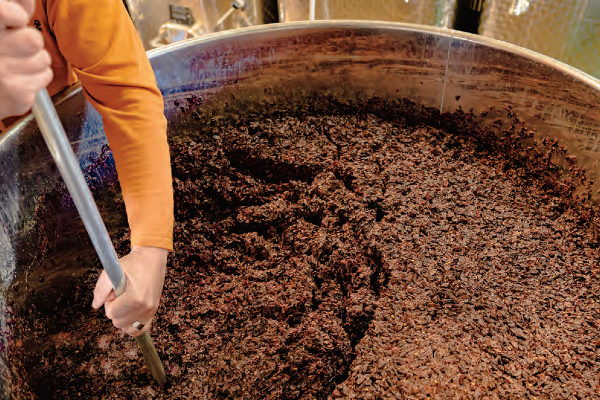Napa Valley's talented and dedicated winemakers work all year long to produce their finest, most special wines. Most of the heavy work is done in the fall months of harvest, and you may see descriptions of how these wonderful wines came to be in magazines, newspapers or online articles.
Undoubtedly you will run into some of the descriptors of the winemaking process, below, which may or may not be familiar. To better enhance your understanding of the delicious wines you'll be tasting and buying, we've included the textbook definitions of these terms, as well as some Non-Wine Analogies or Analysis (NWA, for short) to accompany them.
Acidity
This property of wine can help it age gracefully and creates a lightweight feeling on your palate. Cooler vintages often yield wines with higher acidity.
NWA – There aren't many scenarios in which a lot of acid is a good thing. This would be one of those … too much and your face puckers and your toes curl; too little and the wine is very flat.
Alluvial Fan
This sediment is made up of clay, silt, sand and gravel, formed over time from mineral deposits left by running water. The Rutherford and Oakville Benches are well-known alluvial fans.
NWA – By "fan," they're not meaning, "Hey, I'm a big fan of alluvials. Never forget that championship season of 1978." A fan is actually a triangle-shaped deposit of all the material mentioned above—luscious soil for growing grapes.
Balance
A well-balanced wine offers a synergistic mix of acidity, tannin and fruit concentration. These wines generally age beautifully.
NWA – There really has never been a negative connotation to the word balance (unlike "acid"), and wine is no exception. If it is balanced, chances are you will like it.
Benchland
A long, relatively narrow strip of nearly level or slightly inclined land with distinctly steeper slopes above and below it. Examples are Rutherford, Oakville and Stags Leap District.
NWA – No, this is not the latest theme park/tourist attraction; the word "bench" is used because most benches are long and narrow.
Brix
The scale winemakers use to measure sugar quantity in grape berries or juice. Winemakers use Brix as one way to determine ripeness.
NWA – Not to be confused with "bricks," which are made of concrete and have very little to do, if anything, with wine.
Bud Break
Also known as "bud burst," this is the yearly stage of vine development, in the spring, when small shoots emerge from vine buds. Their period of winter sleep and dormancy is over.
NWA – This is the vine's way of telling you to put your sweaters and long johns away and get your baseball glove out of the garage.
Clonal Selection
The propagation of a superior vine, with several generations ultimately producing an abundance of that wine varietal clone.
NWA – Horses that are selected for this process produce several generations of Kentucky Derby winners.
Diurnal Temperature Range
In a given day, the difference between the highest temperature and the lowest. This range has a strong impact on how grapes ripen.
NWA – This is a fancy way of saying the "weather report" for grapes.
Fluvial Soil
Composites mixed from materials delivered to a river from throughout its upstream course.
NWA – It's just like watching your kids—don't blink, because underwater soil and rock particles are constantly on the move in this process.
Hang Time
The period between a vine's flowering and its harvest, when grapes are left on the vine to ripen.
NWA – Just like going to a party, you never want to be too early or too late.
Hot Binning
Filling a half-ton bin full of hot water for soaking grapes.
NWA – Don't know if "hot grape juice" will ever catch on like hot chocolate has, but it's a vital part of the winemaking process.
Loam Soil
Made of equal parts clay, sand and silt, loam is warm, soft and crumbly.
NWA – This is like a tropical beach for grapes, but with grape vines instead of seaweed.
Pump Overs
The mixing of tanks by pumping wine up from the bottom to submerge the floating grape skin cap, increasing flavor and color in red wines.
NWA – As when you order a caramel iced coffee and all of the caramel is at the bottom. This must change and change quickly.
Punch Downs
During fermentation, grape skins and solids rise to the surface of the mixture. Punch downs push this grape skin cap down from the top of the mixture, to keep it wet and in contact with the juice to extract tannins and color.
NWA – Sort of like when you have whipped cream at the top of your aforementioned hot chocolate and mix it into the rest of your cup with your straw.
Puncheon
A large-format vessel for wine or spirits, generally defined as a barrel holding 500 liters.
NWA – Basically the largest punch bowl you will ever see, though not on a table at a party.
Racking
Moving wine from one vessel to another. Racking filters wine by separating it from the lees (particles that settle after fermentation).
NWA – Very, very important part of the process … you don't want those skins in your glass!
Tannins
Tannin is a naturally occurring compound in plants, seeds, bark, wood, leaves and fruit skins. In wine, tannins manifest as bitterness, astringency and complexity and are mostly found in red wines.
NWA – Tannins can make or break the enjoyment of a glass of wine, sort of like too much pepper on your eggs.
Terroir
The complete combination of factors that influence the final expression and taste of a wine, giving it a "sense of place"—soil, climate, terrain, altitude, hillside angle, water drainage, and exposure to wind and sun.
NWA – This French word is pronounced “tehr-WAAR”—go ahead, I dare you to say it.
Tufa
This type of sedimentary rock is a combination of silica, calcium carbonate and possibly volcanic ash, deposited over time by various water sources.
NWA – Not something you want to pour a big, tall glass of, but definitely a key component of the grape-growing process.
Veraison
The sweetening of flavors, softening of the berries and the color change of grapes on the vine, indicating the onset of ripening.
NWA – The polar opposite of a banana going brown … veraison is a good thing!
Vineyard Block
These sections of a vineyard come in all shapes and sizes and are defined by winemakers and viticulturists. Each block is treated separately according to soil, pruning, trellising, irrigation, variety, rootstock and more.
NWA – Winemakers put their hearts and souls into the upkeep of these special vines, imbuing them with personalities.
Zymurgy
The science and study of fermentation.
NWA – You don’t really need to know this one, we just wanted to end with a “z” word so you aren’t disappointed.




